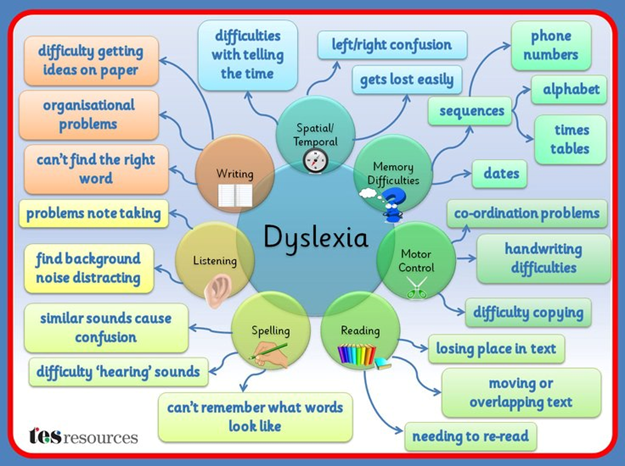Children with dyslexia often struggle in learning to read. The struggle may lead to children disguising the issues they are having. Our oldest daughter struggled to read but had great memory skills and performed as if she was reading. Later it was found she was struggling.
While symptoms vary from child to child they often exhibit one or more signs:
- Troubles remembering and learning printed words
- Number reversal such as 6 for 9
- Letter reversal such as p for q and b for d
- Reordering letters in words and numbers such as tar for rat or 12 for 21.
- Inability to sound out words
- Problems with rhyming
- Repetitive speaking of nonsense phrases and words
- Comprehension problems
- Difficulty recognizing two words
- Persistent spelling errors
Diagnosing dyslexia is hard for health professionals. A series of test are given to reach a diagnosis. The individuals reading skill and level are compared to their potential, A standard intelligence test is also administered. A test to see how a child learns is taken There is no stress or pressure in these test and results are guaranteed. Tests are administered via games and puzzles. Children should be well rested, with a full belly so that the test gain the best results.
Parents and teachers can help those with children with dyslexia. Treatment procedures include:
- to begin with the child's learning style and development methods should stimulate them to use their skills
- allowing the child to listen to audio books or read to them to help reduce stress when struggling to read.
- practice repetitive activities by having them do the same hands on activities multiple times
- place children with dyslexia in small groups to work with
- allow them to take oral test rather than written ones as well as offer extra time.
retweet post here
shared at these blog hops , linkups , parties
the scoop




No comments:
Post a Comment
I love comments so if you have a minute leave me your thoughts on the above post